Abstract
Because chlorination of potable surface waters may be associated with increased risk of carcinogenicity, substitute methods for the routine disinfection of public water supplies are being explored. As part of this search, it is especially important that the potential health effects of each alternative method should be considered. Chemical treatment of drinking water by chlorine dioxide (ClO2) is a likely alternative mode of disinfection. Two common by-products of the ClO2 disinfection of surface water are chlorate and chlorite. These oxidants may have negative health effects on certain high risk groups. Newborns, in particular, would seem to be at increased risk to red cell damage from oxidant stress. The historical record study being reported here compares the morbidity and mortality experience of newborns in two similar communities, one of which used chlorination and the other which used high levels of chlorine dioxide for potable water disinfection. A statistically significant positive association was found between exposure of the mother to ClO2-treated water during pregnancy and prematurity of the newborn as assessed by the attending physician and by a greater weight loss after birth. The rates of jaundice, birth defects and fetal and neonatal mortality did not differ significantly between communities. Because of the limitations of the study design, the findings reported here should be considered suggestive rather than definitive.
Full text
PDF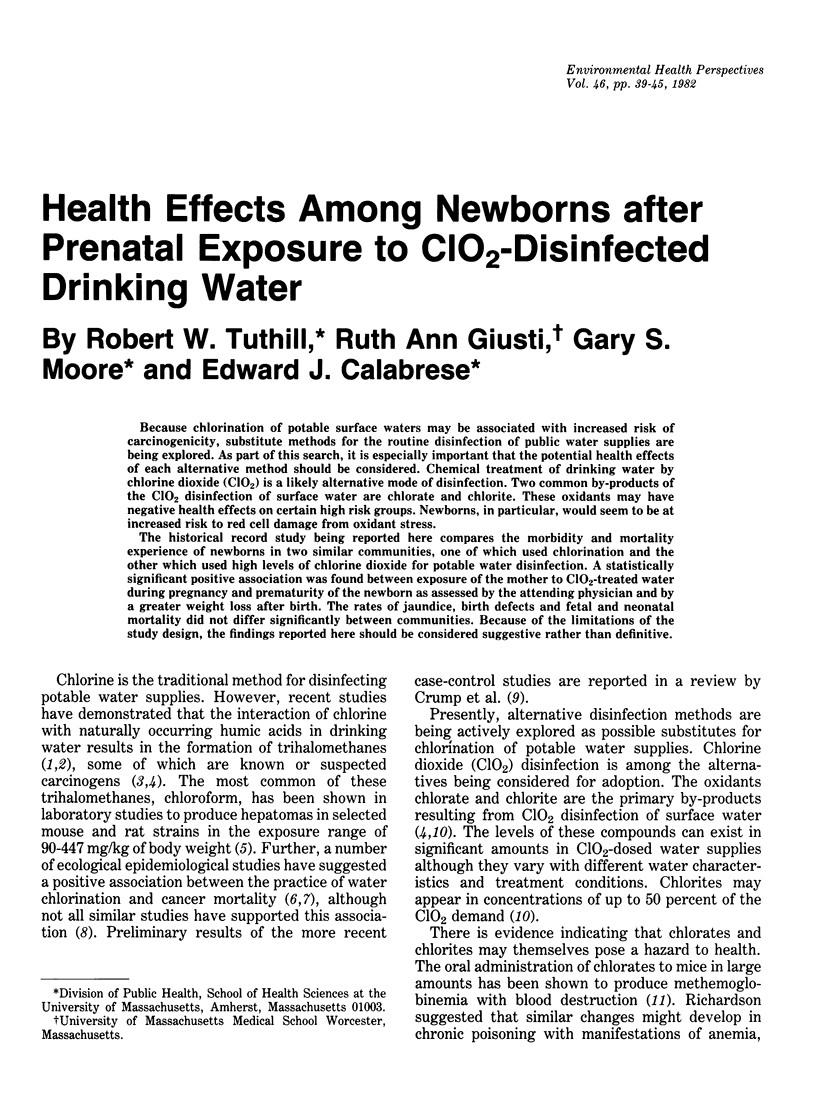
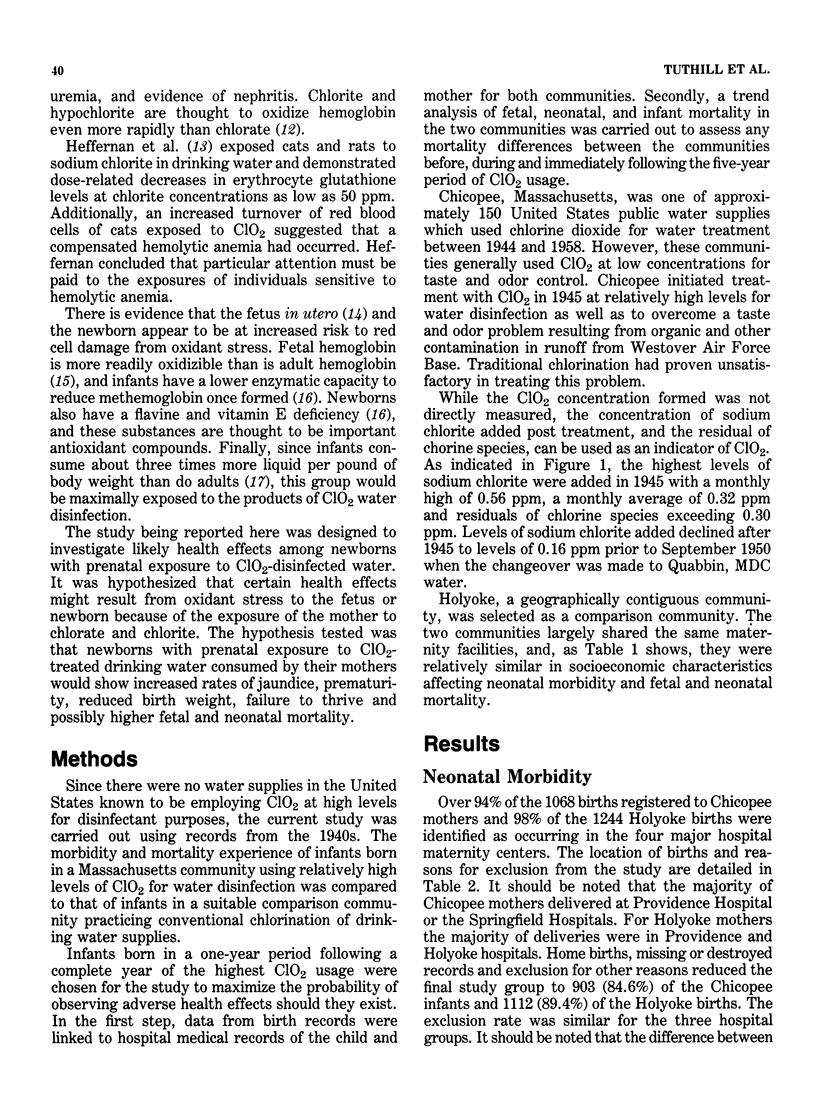
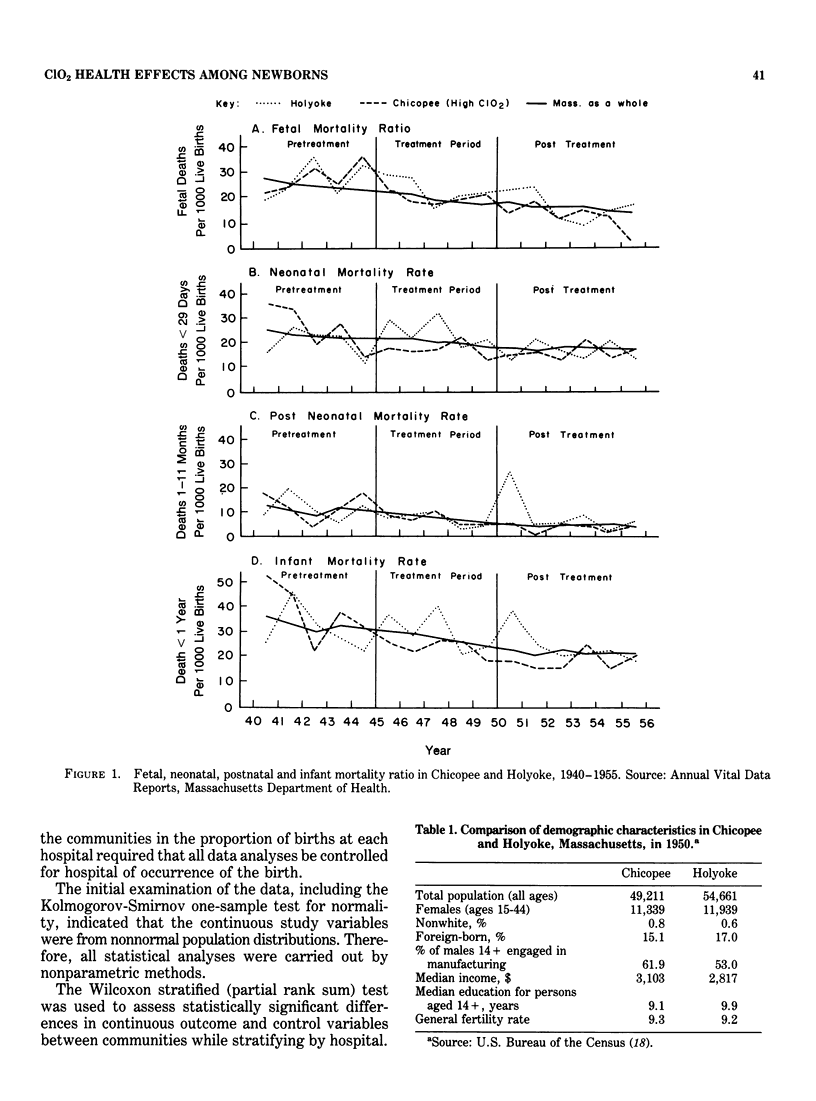
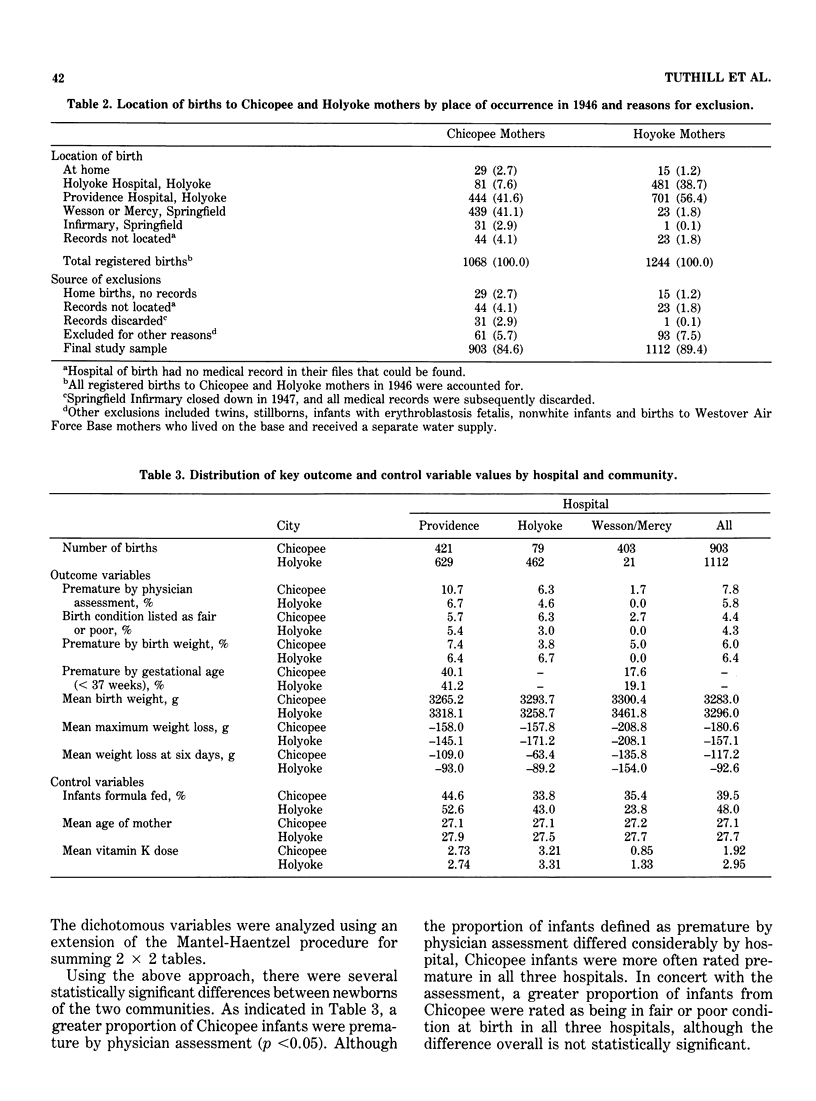
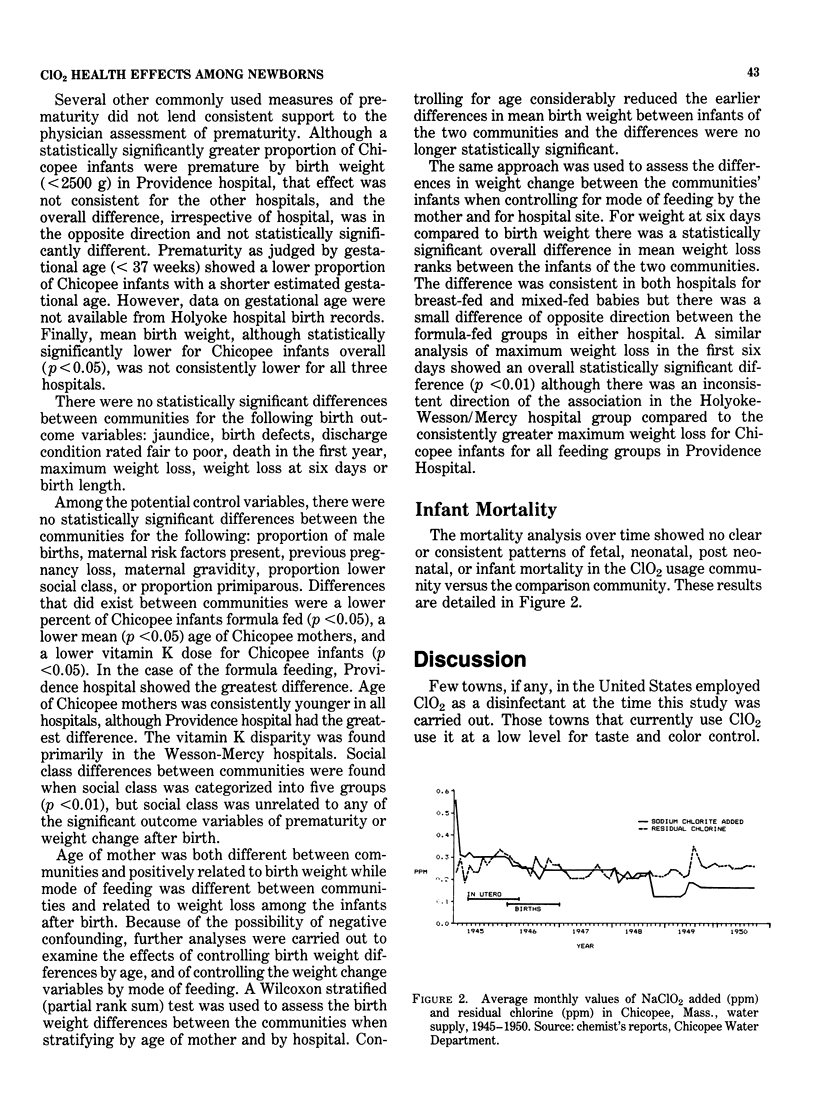
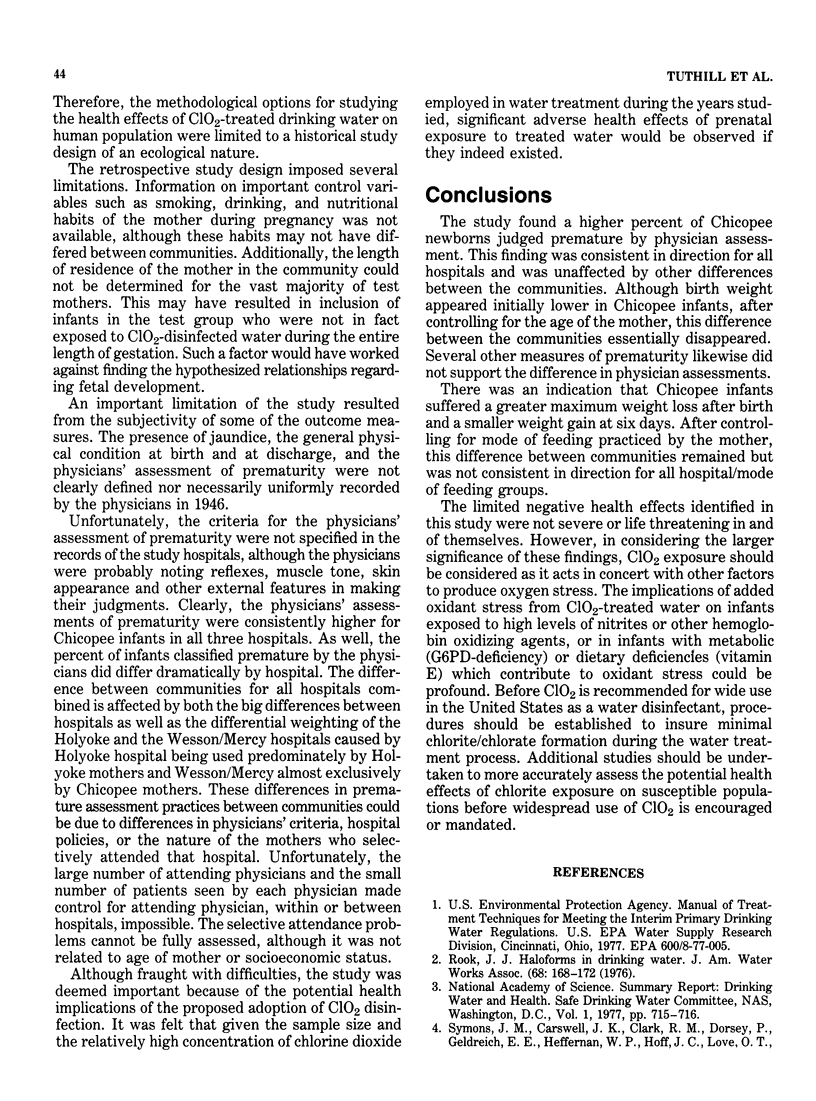
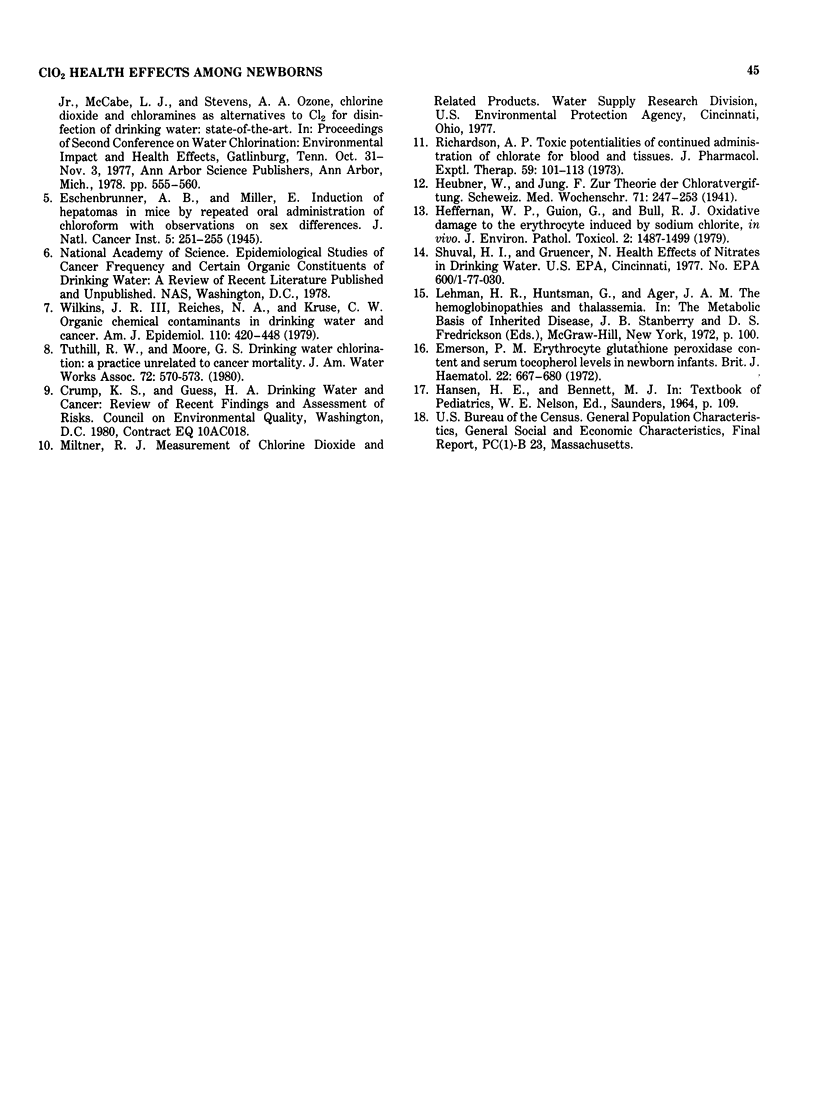
Selected References
These references are in PubMed. This may not be the complete list of references from this article.
- Emerson P. M., Mason D. Y., Cuthbert J. E. Erythrocyte glutathione peroxidase content and serum tocopherol levels in newborn infants. Br J Haematol. 1972 Jun;22(6):667–680. doi: 10.1111/j.1365-2141.1972.tb05714.x. [DOI] [PubMed] [Google Scholar]
- Heffernan W. P., Guion C., Bull R. J. Oxidative damage to the erythrocyte induced by sodium chlorite, in vivo. J Environ Pathol Toxicol. 1979 Jul-Aug;2(6):1487–1499. [PubMed] [Google Scholar]
- Wilkins J. R., 3rd, Reiches N. A., Kruse C. W. Organic chemical contaminants in drinking water and cancer. Am J Epidemiol. 1979 Oct;110(4):420–448. doi: 10.1093/oxfordjournals.aje.a112825. [DOI] [PubMed] [Google Scholar]


